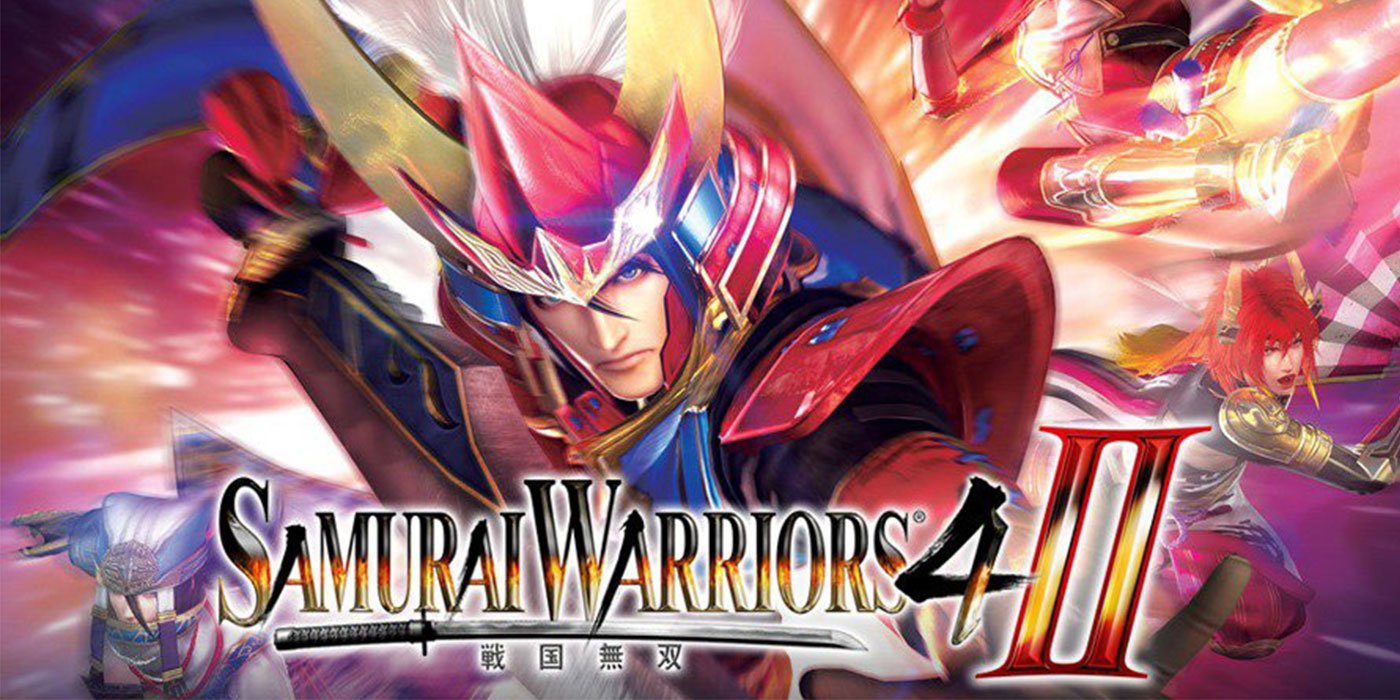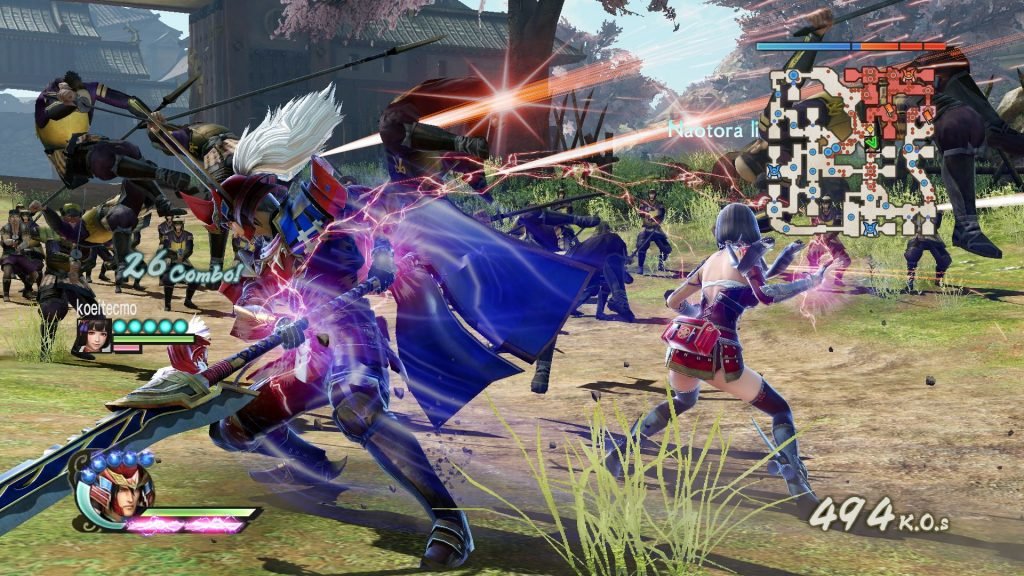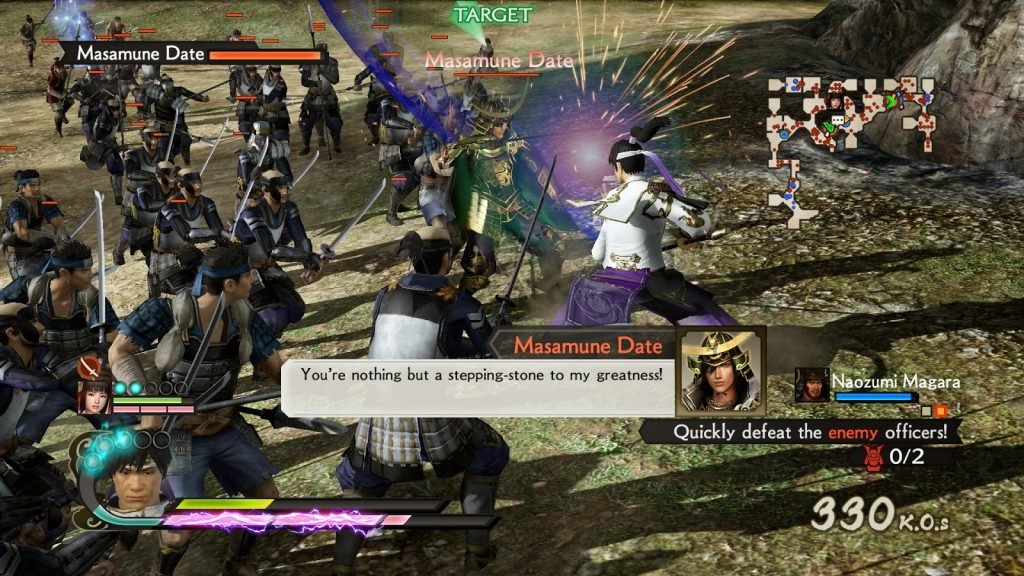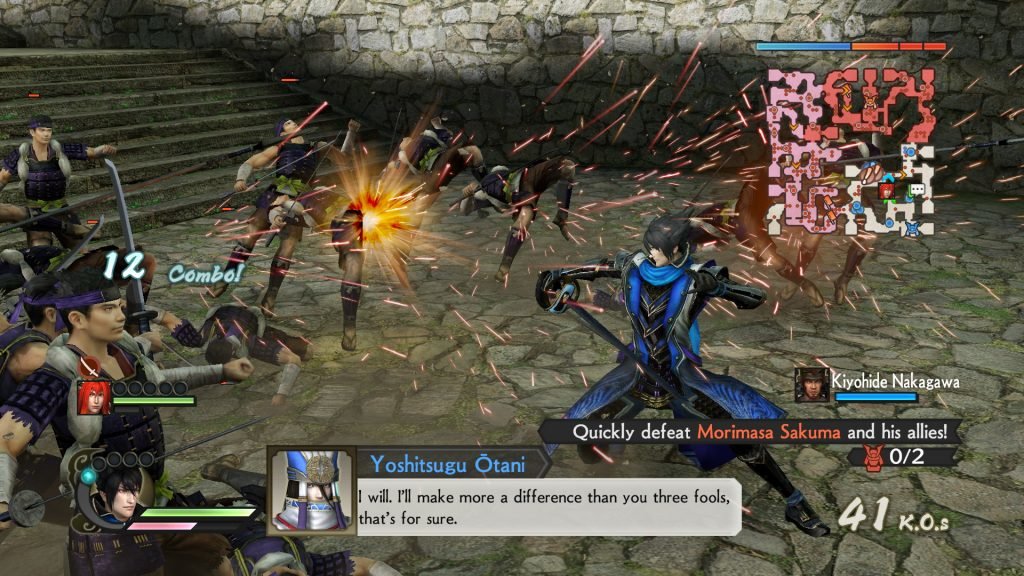What’s in a name? In the case of Samurai Warriors 4-II, what’s in a title? The Roman numeral II appended to the end of its title suggests that it is a proper sequel of some kind. A continuation of the fourth main entry in an on-going action game series based on a romanticized retelling of Japanese feudal war history and its heroes during the Sengoku era. Samurai Warriors 4, was released by KOEI TECMO only just a year ago, and this new game, with the ‘II’ appended to it, isn’t actually a true sequel.
In actuality, it is an “enhanced” remake of the exact same game (Samurai Warriors 4) with some re-tooling of the combat mechanics, character ability development, weapon development, enemy A.I., offering a different story structure and adding an online co-op mode. It is more a of a GOTY style release instead of a full on next big numbered release in the series. The main departure from the original game is that it now focuses on single character narratives during the story campaign, allowing for more of a personal telling of stories from the points of view of each historical warrior figure, dividing the main story campaign into 13 individual chapters each focused on one specific character instead of an overall larger narrative that focused on the larger groups of warring clans and regions. While HD remakes and complete bundle re-packages of existing games seems to be a trend that has come to be expected now this current gaming generation, re-releasing the same game with a few enhancements and online co-op mode after only one year after release seems somewhat odd, but I think that the refinements improve the overall play experience and I found it to be quite enjoyable and fun to play.
The Samurai series is a sort of spin-off step-child of the main Dynasty Warriors action game series. Where the Dynasty Warriors series mainly focuses on Chinese historical war events and its heroes, Samurai Warriors focuses on Japanese war history and its heroes. The most recognizable feature present throughout the game series is the stylish ‘one versus one hundred’ themed combat, in which your lone character, typically a mythical warrior, is dropped into a massive map, usually a castle or fortress, while having to hack-and-slash through seemingly endless waves of enemies at a time approaching from every direction (seemingly in the hundreds) as you try to clear a path to your next objective on the map via on foot or on horseback, objectives which change dynamically. There is a very light ‘real-time strategy’ element taking place in the background at all times. As you travel about clearing different objectives on the map you are regularly prompted to take out new powerful enemies in order to unlock paths to proceed deeper into the map, with the end goal usually requiring defeating the highest general or boss of each territory or stage.
The combat itself isn’t really that deep or difficult to master, at first at least. You basically have one light attack move and one heavy attack move, with combos that basically require mashing the same two buttons repeatedly, or repeatedly mashing a combination of both light and heavy attacks. Fighting enemies causes a special gauge to fill called the ‘Mosou Gauge’ which lets you unleash a very powerful special attack that allows your character to take out a larger group of enemies at once with dramatic flair. Every stage allows you to take another character into battle which you can swap instantly at any time with a simple push of a button. While playing through the game on the Easy level doesn’t pose much of a challenge, going just one extra difficulty level higher, Normal, can actually be pretty challenging. On higher difficulty, you take on much more damage from even basic enemies while mini-bosses or generals seem to be far more aggressive and defensive, putting up a good boxing match at times. Setting the game on the highest difficulty makes even the most basic enemy ridiculously overpowered, becoming like damage sponges while your defenses are significantly lowered. Leveling up your character is a must before attempting any higher difficulties, but then again, this game was built for level grinding, or level capping in mind.
This game is built around repeatable game play. All of the characters start at Level 1, but gain levels and abilities through repeated combat. Defeated powerful enemies drop new weapons, mounts, books and gold as loot. The books can be used in the game Shop, via the character select menu, to unlock more abilities and skills via a tile board system, which requires certain level cap requirements and book amounts in order to acquire. The in-game currency allows you to pay for weapons upgrades that also features elemental abilities (fire, lightning, wind, etc.) and you can also use in-game currency to upgrade mounts. Once you’ve cleared a chapter for any character, you’ll still have plenty of levels to reach and abilities to acquire, plus there are also secondary characters to level up as well, which includes purchasing ability and weapons upgrades.
If you want a more difficult challenge, you can try one of the survival modes. The (Standard) survival mode challenges you to climb as many levels as possible fighting your way through waves of enemies by yourself. It functions more like a rogue-like, without offering any sort of healing items to recover yourself. Pretty tough. You can also choose to use one of your own personally created characters for the challenge, as the game also features a very robust character creation feature that lets you utilize most weapons in the game and offers a plethora of costume and appearance options.
Samurai Warriors 4-II features a roster of 56 characters wielding unique weapons, move sets and abilities. The story mode focuses on 13 of the characters with 5 stages each. Most are returning characters from the previous game with added story content and you can select between a number of them as secondary characters to join you in battlefield before starting each stage, although they are limited to specific stages, but some will cross-over into other character stories. Every stage is bookended with cut-scenes featuring Japanese voice-overs with English subtitles, offering historical context and personal insight into the motivations of each main character and their supporting cast. Environments are very large, colorful, seasonal and scenic, usually taking place in or near castles or fortresses, varying in geography, like forests, mountains, beach-side ports complete with landing warships, and large city-like castle towns.
The Warrior series games are well appreciated for their attention to historical detail from story elements to architecture, and the scenery presented here is pretty impressive. I do feel like I’m running around fighting battles in ancient Japan, albeit with very over powered Anime type characters. The developers took a lot of creative liberties in designing their historical figures with a more seemingly exaggerated Anime inspired character designs and abilities, which makes them look, move and feel more like super hero characters making it that much more quirkier and fun to play. Omega Force and Koei Tecmo put a lot of effort into story and character development here, putting a spotlight on each character personality which is also demonstrated in their different weapons, and play styles, and I felt really absorbed with the ‘me against the universe’ theme in this hack-and-slash action style that the series has to offer, and the game excels at and is simply great at doing, even though it’s especially grind intensive.
This review is based on a review copy of Samurai Warriors 4-II developed by Omega Force published by KOEI TECMO.
- 56 Different Playable Characters
- Fun Co-op Mode
- High Replay Factor
- It's a Remake Instead of a Release
- Too Much Grinding Involved
- No English Voice Overs




